Winter Wildlife Spotting

As the seasons change, so does the wildlife. Gone are the swallows and hedgehogs as we welcome starlings, geese and swans to our shores.
Stunning starlings
Found throughout the year in northern Europe, starlings migrate to the chilly UK coast around October and stay here until spring.
The starling murmurations are a must-see. Look to the sky at dusk to see huge flocks swoop and twist around each other in mesmerising patterns.
Shapwick Heath, part of the Avalon Marshes in Somerset, is famed for its large starling population. It’s one of Britain’s biggest roosts, so visit between October and March to see these birds in action.
The nearby Albion Inn serves some of the best breakfasts in the land. Nothing like a hearty meal to prepare you for an afternoon of birdwatching.
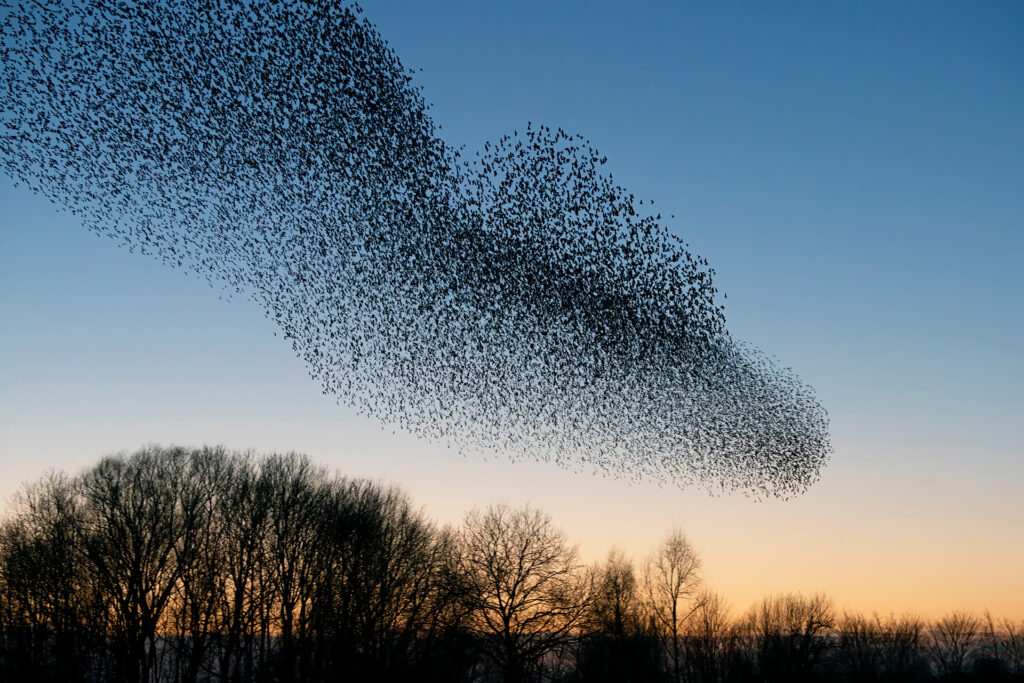
Pic: Shutterstock
Further north, there are plenty of starlings to discover in Gretna Green. Millions of the birds evidently elope here every year!
The open field where Lochmaben Stone lies is the perfect starling viewing spot. Watch the birds dance in the sky as you admire the views of the River Esk.
Warm yourself up in the Massarella Coffee Shop and walk over to the Gretna old parish church. You might even spot an eloping bride and groom!
Mountain hares
Mountain hares prepare for winter by transforming their brown coat to bright white in order to camouflage.
There is a large population of these cuties in northern England, especially in Marsden Moor, North Yorkshire. Escape here to catch a glimpse of our furry friends as well as the stunning scenery.
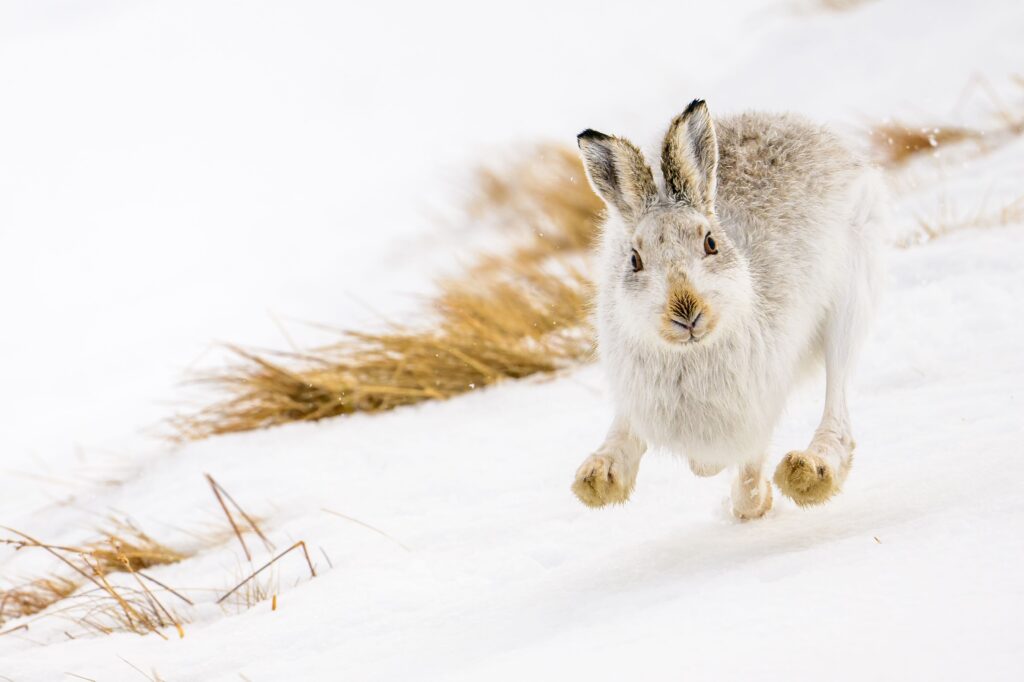
Pic: Shutterstock
They are shy creatures but if you approach slowly, you should be able to get a good picture of them.
After your walk, cosy up in Crumbals On The Corner and devour a scrummy panini with a hot cup of coffee.
Pink-footed geese
The pink-footed geese arrive in the UK in droves from countries like Iceland and Greenland. You might not see them coming but you’ll most certainly hear them!

Pic: Shutterstock
Gibraltar Point near Skegness in Lincolnshire is home to hundreds of pink-footed geese over the winter. This coastal area makes up for its cold weather with magnificent wintry views. There’s a café on the reserve so pop in for a warm cuppa.
Grey seals
Staying in Skegness, take a jaunt over to Donna Nook to admire the huge grey seals preparing to give birth. If you time your visit well, you may see a pup being born on the shore.
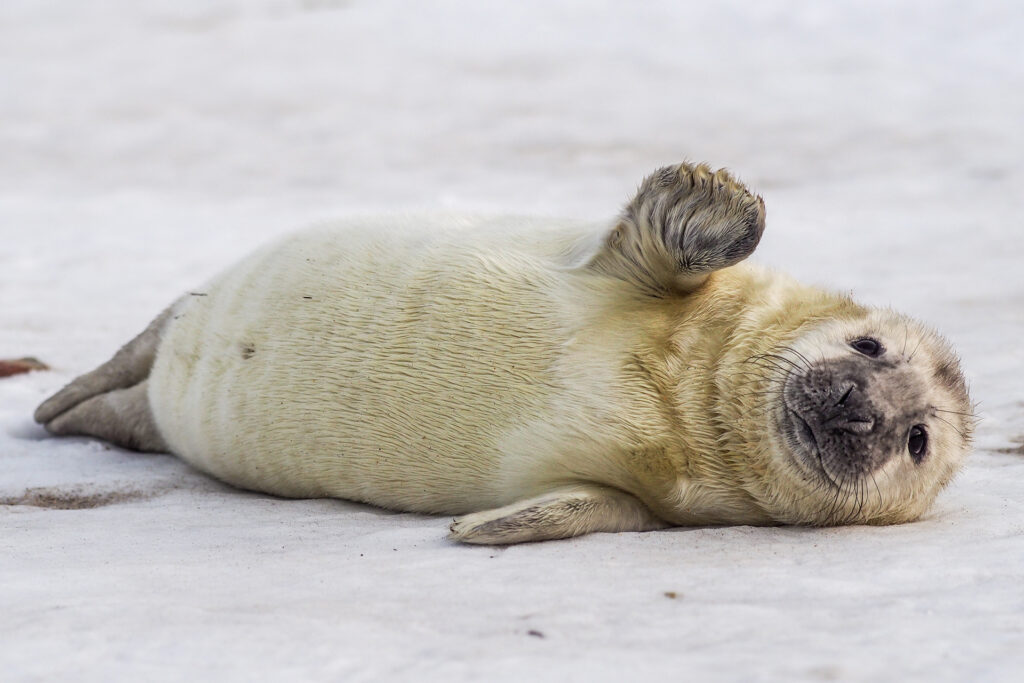
Pic: Shutterstock
But if there aren’t any seals on the sand dunes head to Natureland Seal Sanctuary to see some rescued seals in their new home. They are too cute!
Robins galore
You don’t need to go far to catch a glimpse of winter’s most famous bird. Just look out of your window and no doubt you’ll soon spot a robin or two.
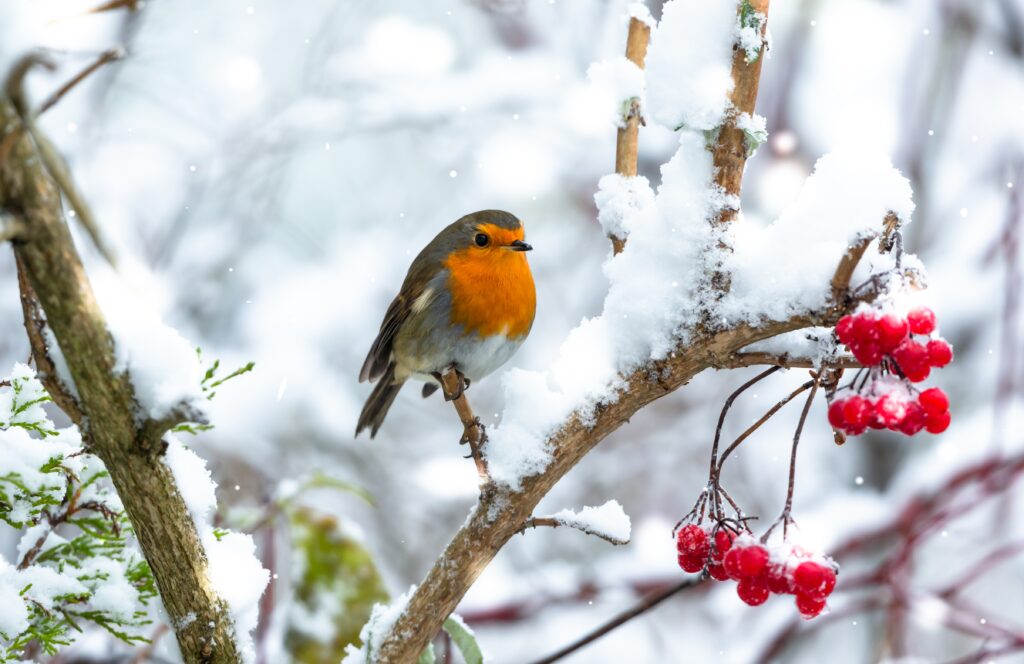
Pic: Shutterstock
The best way to attract a robin is by putting out balls of fat, or mealworms for a special treat. This is sure to attract this beautiful, fiercely territorial bird to your garden – and if you’re patient they may venture very close indeed.
A visit to a local park or woodland will boost your chances of spotting some rockin’ robins!
Arctic foxes
Arctic foxes haven’t roamed free in the British countryside since the last Ice Age. Now they spend their days in places like the Highland Wildlife Park and Dudley Zoo and Castle.
These playful pups will keep you entertained for hours. The foxes in Dudley are named after Peaky Blinders characters so say hello to Tommy, Arthur, John and Finn!
While you’re in Dudley visit The Summerhouse for some proper pub grub and the Tivi Ale Micro Bar for some delicious cocktails.

One of the arctic foxes at the Highland Wildlife Park. Pic: Shutterstock
Back at the Highland Wildlife Park you’ll find May and Bard, the parents of the Shelby brothers. The park also hosts winter animals like reindeer, bison and wolves.
Can’t get there? No problem. The park has live webcams 24/7, including one of the Japanese macaque snow monkeys.
Closer to home, urban foxes can be seen roaming the streets. Take a walk around your local area at night and you may spot some festive foxes.
Elusive partridges
A partridge in a pear tree! There are two types of partridge, red and grey – however the numbers of both are in decline.
The grey partridge are usually seen in lowland areas, particularly Norfolk.
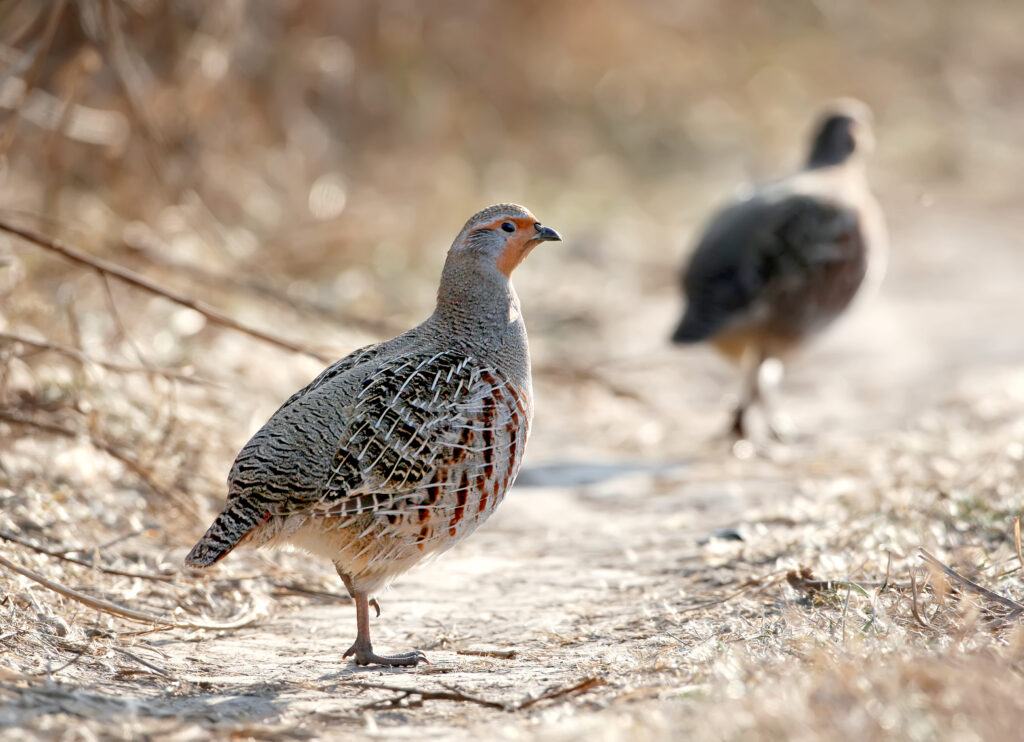
Pic: Shutterstock
Head to Holkham Hall and you should see some of them wandering about. This beautiful estate has a nature reserve where you’ll also find bramblings and chiffchaffs.
However if for some reason you can’t find any, there is another way of seeing a partridge – by visiting The Partridge restaurant, also in Norfolk!
Majestic barn owls
As the sun sets earlier during winter, barn owls tend to extend their hunting hours into daylight, so look to the skies mid-afternoon for a chance to see them.
Watch the owls soar noiselessly through the wintry sky. Unlike pink-footed geese, barn owls make almost no sound when they fly to ensure that their prey won’t be alerted to their approach.
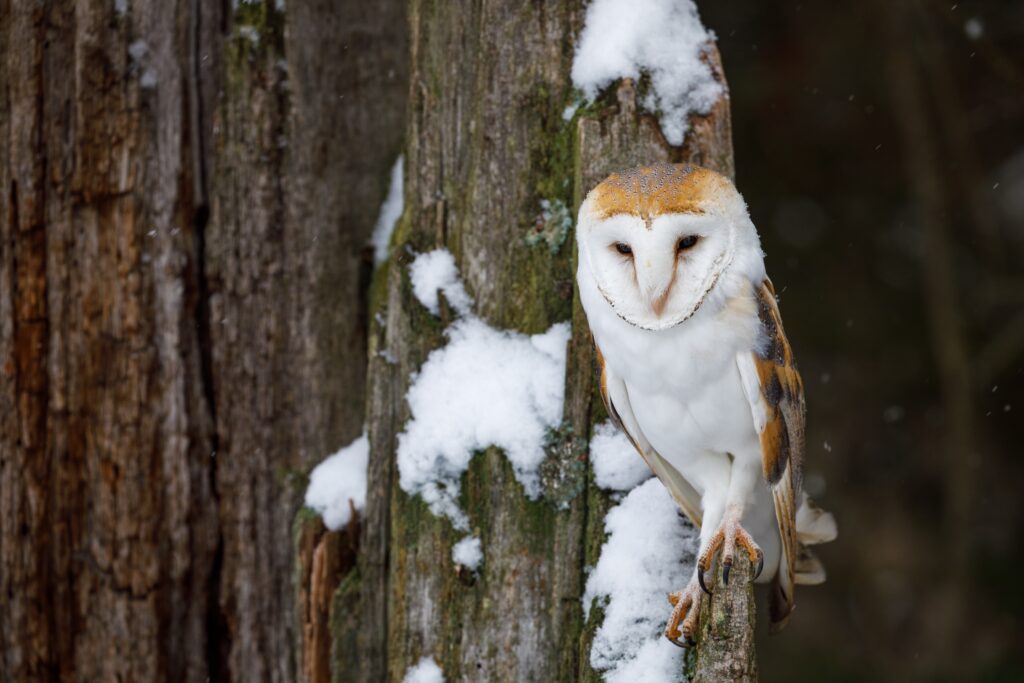
Pic: Shutterstock
But when the owls do make a sound, they don’t hoot – they screech! Their piercing screams can be heard for miles! Cors Goch on Anglesey is a reserve filled with barn owls. This area can get quite muddy during winter so appropriate footwear is a must.
You can even stay in a cottage called Barn Owl. The nearby cottage has fantastic views of Cors Goch and the Snowdonia mountain range. You may even spot an owl or two from the comfort of the living room! Book via qualitycottages.co.uk
Spot the ptarmigan…
Northward, the Highlands are home to the pretty ptarmigans, but they are very difficult to spot. Their white feathers act as camouflage against the snowy backdrop of the Scottish countryside.
If you visit during spring or summer, you’ll notice that the ptarmigans are no longer white, but brown. Just like the white mountain hares, these birds are continuously moulting in order to blend in to their surroundings.
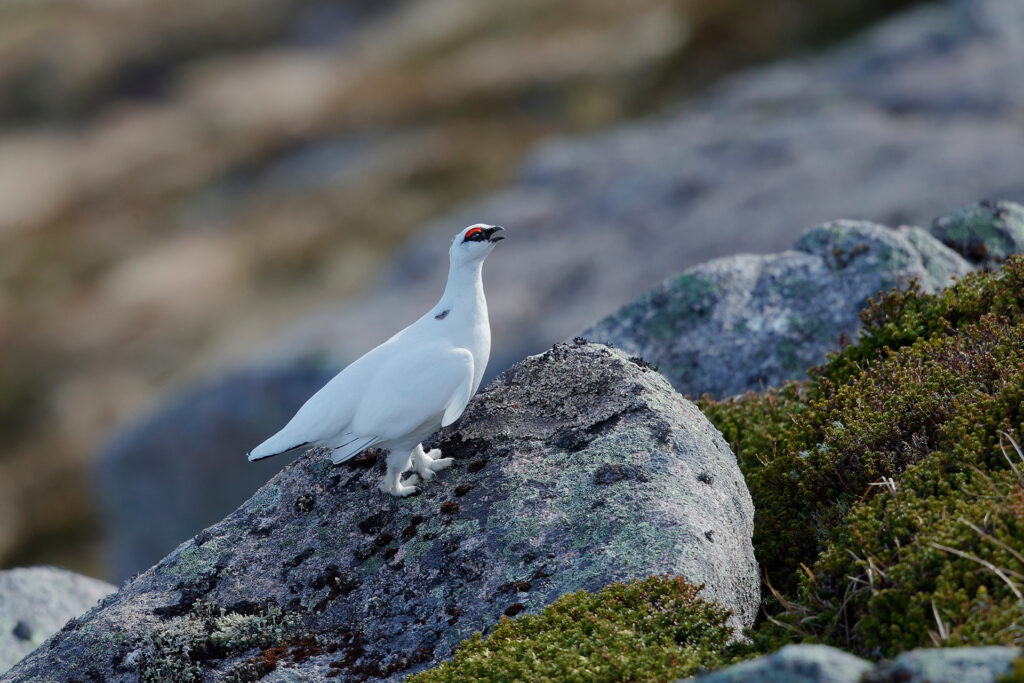
Pic: Shutterstock
The Highlands are the only place in the UK you’ll find them so get planning your next trip up here! Visit Applecross and take the famous Pass of the Cattle to see the birds from the comfort of your own car. Or if you want to get a bit closer, there are plenty of ptarmigans flying around the Cairngorms.
Red squirrels
The elusive red squirrel can be difficult to spot, but you’ll find plenty of them in Gight Wood in Aberdeenshire. Watch them scurry up and down oak trees as they forage for food in preparation for winter. Follow the forest and soon you’ll find the ruins of Gight Castle… in the middle of a cattle field!
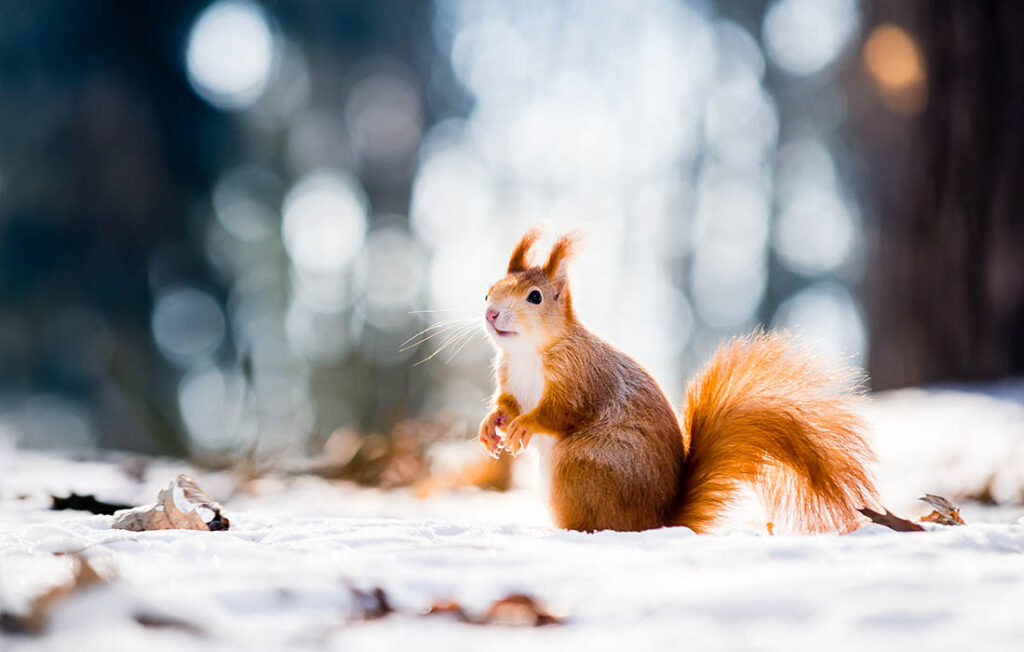
Pic: Shutterstock
Aira Force in the Lake District is another red squirrel hotspot. Take the Gowbarrow trail and meander through the dense woodland passing waterfalls and wildlife. Or head south to Borthwood Copse on the Isle of Wight for a wintry walk where you’re bound to find some of these furry friends.
On the island, make sure you cosy up in Vernon Cottage and sample their afternoon tea. This cute cottage is the perfect location to snap a few wintry pictures!
Elegant swans
Whooper and Bewick’s swans spend their winter in the UK, with many of them travelling from Russia and Iceland.
The WWT Welney Wetland Centre in Norfolk is jam packed with whooper swans. Between November and March, the visitor centre holds a number of swan-related activities to allow visitors a closer look.
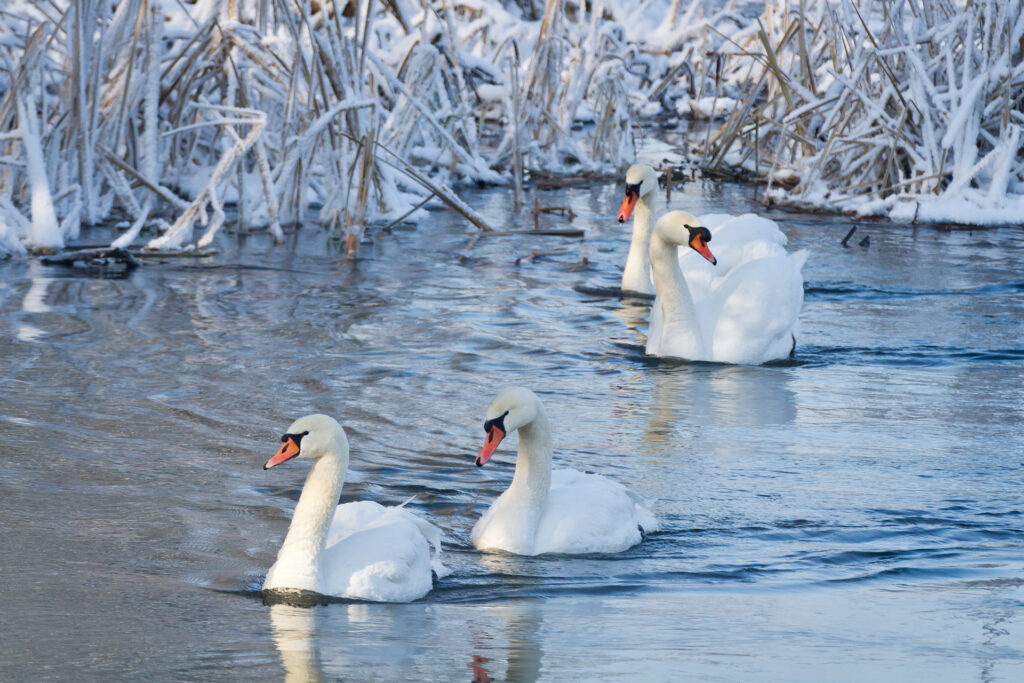
Pic: Shutterstock
The Norfolk Fens host a number of Bewick’s swans on their marshy lands. The vast Norfolk countryside is in full view as well as the gorgeous birds.
Perhaps the reason these swans flock here is to see their owner – the Queen! We all know the Royal Family spend their Christmas and New Year on the Sandringham estate. Unfortunately the house and gardens are closed for the royals’ arrival, but they will reopen in spring next year for us to explore again.
Welcome, Deer Visitors
Tatton Park in Knutsford is open during the festive season and is the best place for a spot of deer watching. Red and fallow deer have called this area home since the 13th century.
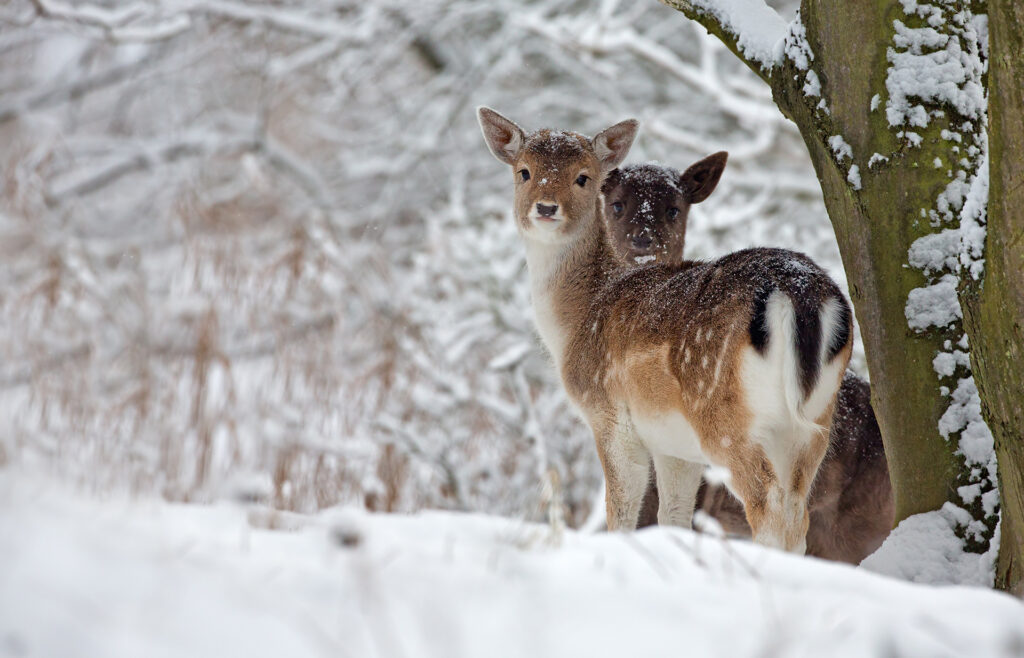
Pic: Shutterstock
Special family events are on throughout November and December – find out more at tattonpark.org.uk
In Scotland, the Red Deer Range in Galloway Forest Park allows you to get a closer look at the deer and even feed them! The outdoor viewing area is the best place to see all of their 60 deer milling around.
While you’re in the area, drop in at the Carsphairn Tearooms for a hearty lunch. The toasties are incredible!




